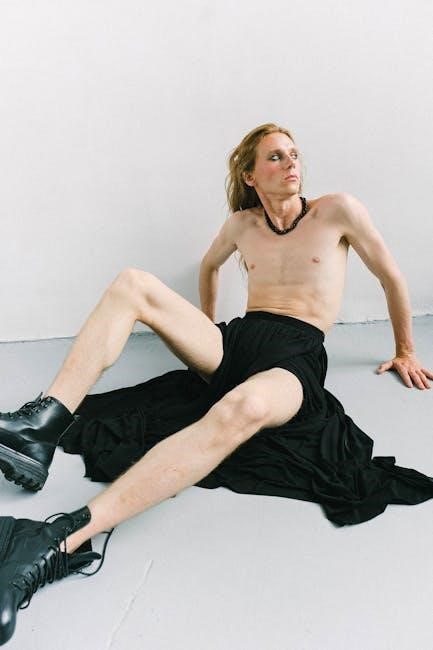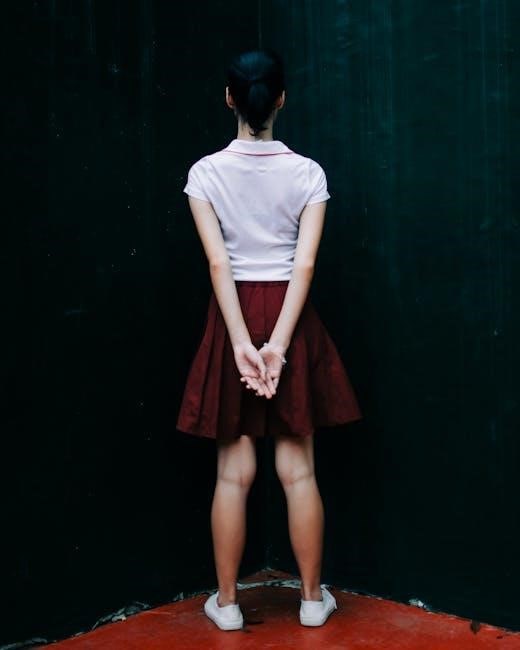Discover the ultimate guide to skirt lengths, exploring historical trends, modern styles, and practical tips․ From mini to maxi, understand how skirt lengths define fashion eras and suit different body types, occasions, and seasonal trends․ Your perfect skirt awaits!
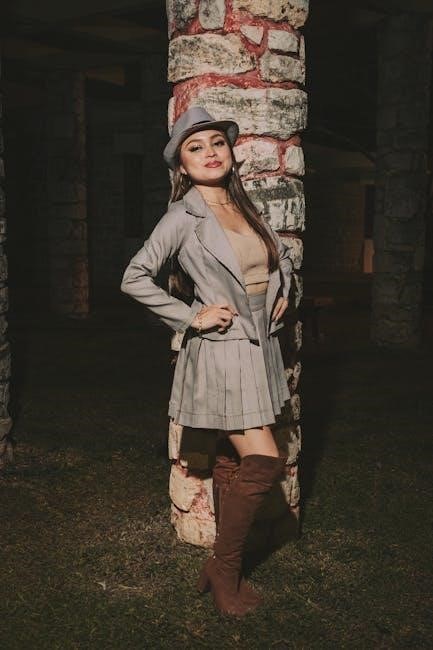
Historical Evolution of Skirt Lengths
The history of skirt lengths is a fascinating journey through fashion, culture, and societal norms․ In the 19th century, skirts were long and floor-sweeping, reflecting Victorian modesty and restrictive gender roles․ The early 20th century saw hemlines rise gradually, with the 1920s flapper era marking a revolutionary shift to shorter, knee-length skirts, symbolizing women’s liberation․
The 1940s and 1950s brought contrasting trends: wartime practicality led to midi skirts, while the post-war era embraced full, feminine designs․ The 1960s, however, shattered conventions with the rise of mini skirts, becoming a cultural phenomenon․ The 1970s countered with maxi skirts, embodying a bohemian, free-spirited lifestyle․
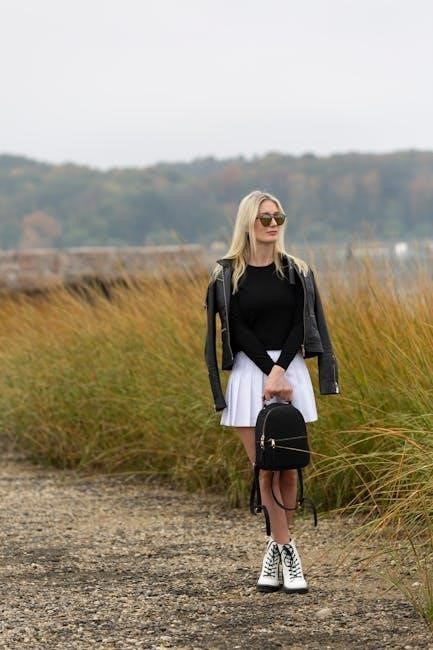
The 1980s saw a mix of power suits with shoulder pads and shorter skirts, blending professionalism with femininity․ From the 1990s onward, skirt lengths diversified, reflecting individuality and shifting cultural values․ Today, skirt lengths vary widely, from micro minis to flowing maxis, offering endless style options․
- 19th century: Floor-sweeping skirts dominated․
- 1920s: Knee-length skirts symbolized liberation․
- 1940s-1950s: Midi and full skirts reflected wartime and post-war aesthetics․
- 1960s: Mini skirts became a cultural icon․
- 1970s: Maxi skirts represented bohemian fashion․
- 1980s: Power suits with shorter skirts emerged․
- 1990s-present: Diversity in skirt lengths prevails․
This evolution highlights how skirt lengths mirror societal changes, empowerment, and personal expression․
Types of Skirt Lengths
Skirt lengths vary widely, offering diverse styling options․ From micro and mini skirts to midi and maxi designs, each length suits different occasions, body types, and personal preferences․ Explore these styles to discover which flatters you best and aligns with your wardrobe goals․
Micro and Mini Skirts
Micro and mini skirts are among the shortest skirt lengths, typically falling above the knee․ Micro skirts are extremely short, often just a few inches below the waist, while mini skirts generally reach mid-thigh․ Both styles are bold and attention-grabbing, making them popular in fashion-forward wardrobes․ Originating in the 1960s, mini skirts became a symbol of liberation and modernity, while micro skirts emerged later as an even more daring option․ These skirts are ideal for confident individuals who want to make a statement․ Styling tips include pairing them with tights or leggings for cooler weather and balancing the look with longer jackets or cardigans․ They are versatile and can be dressed up or down, depending on the occasion․ Despite their short length, micro and mini skirts remain timeless and continue to influence contemporary fashion trends․
Midi Skirts
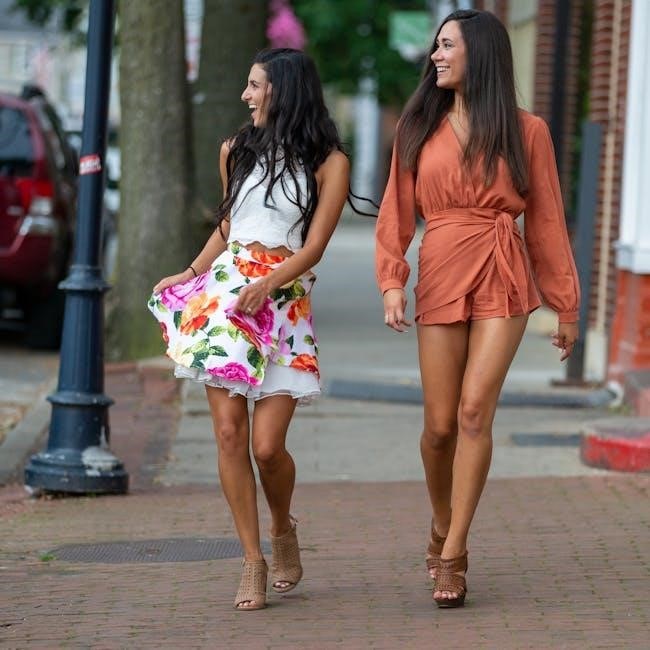
Midi skirts are a popular choice for their versatility and flattering silhouette․ Typically falling between the knee and calf, midi skirts strike a balance between modesty and style․ They are ideal for women of all body types, as they elongate the legs and create a balanced proportion․ Originating in the 1940s, midi skirts gained prominence as a practical yet elegant alternative to shorter styles․ Over the years, they have remained a timeless classic, adapting to various fashion trends․ Whether paired with heels, boots, or flats, midi skirts offer endless styling possibilities․ They are suitable for both casual and formal occasions, making them a wardrobe staple․ For a chic look, layer them with cardigans or blazers, or opt for a belt to accentuate the waist․ Midi skirts are also a seasonal favorite, perfect for spring, summer, and autumn․ Their enduring appeal lies in their ability to combine comfort with sophistication, making them a must-have in every woman’s wardrobe․
Maxi Skirts
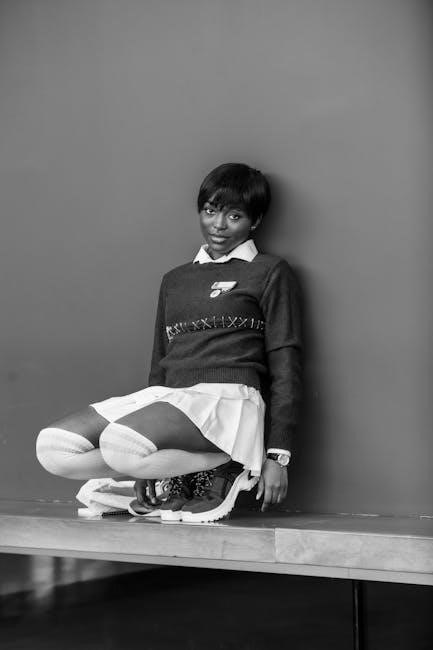
Maxi skirts are a timeless and versatile wardrobe staple, characterized by their floor-sweeping or ankle-grazing length․ They offer a graceful, elegant silhouette that flatters most body types․ Originating in the 1960s and 1970s, maxi skirts became a symbol of bohemian and hippie fashion, embracing freedom and comfort․ Over the years, they have evolved to suit various styles, from casual to formal․ Pair them with crop tops for a modern look or with flowing blouses for a romantic vibe․ Maxi skirts are perfect for warm weather, as they provide coverage while keeping you cool․ They also transition seamlessly into cooler seasons when layered with tights, boots, and cozy sweaters․ Available in countless patterns, fabrics, and colors, maxi skirts cater to every personal style․ Whether you’re attending a formal event, a casual gathering, or running errands, a maxi skirt is a practical yet stylish choice․ Its flowing design creates a slimming effect, making it ideal for all figures․ With endless styling options, maxi skirts remain a wardrobe essential, blending comfort, elegance, and versatility․
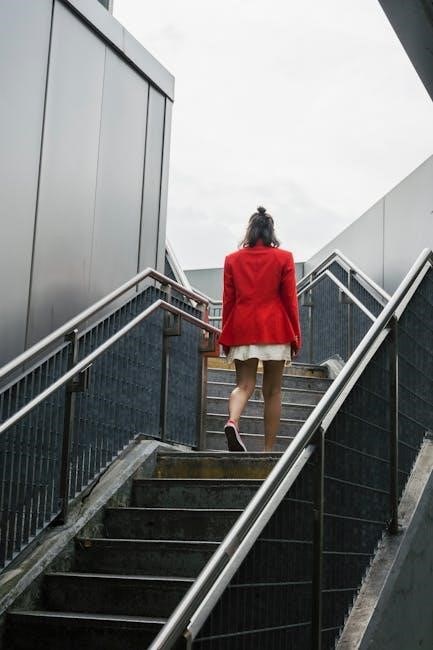
Tea and Tiered Skirts
Tea and tiered skirts are two distinct yet equally charming styles that add a touch of elegance and whimsy to any wardrobe․ Tea skirts typically fall just above the knee, creating a modest yet feminine silhouette․ They gained popularity in the 1940s and 1950s as a practical yet stylish option for women․ The design often features a subtle flare, making them flattering for most body types․ Tiered skirts, on the other hand, are characterized by multiple layers of fabric, creating a cascading effect․ This style has a bohemian vibe and is perfect for those who embrace a more eclectic, vintage-inspired look․
Both styles are versatile and can be dressed up or down․ Tea skirts pair beautifully with fitted blouses and heels for a sophisticated look, while tiered skirts are ideal for casual outings when paired with graphic tees or crop tops․ The layered design of tiered skirts adds movement and drama, making them a standout piece in any outfit․ Whether you prefer the classic charm of tea skirts or the playful appeal of tiered skirts, these styles offer endless possibilities for expressing your personal style․
Asymmetrical and High-Low Skirts
Asymmetrical and high-low skirts are modern and fashion-forward designs that break away from traditional symmetry․ Asymmetrical skirts feature uneven hemlines, often cut at an angle or with one side longer than the other, creating a dynamic and edgy look․ This style is perfect for those who want to add a touch of contemporary flair to their outfit․ High-low skirts, also known as “mullet skirts,” are characterized by a shorter front hem and a longer back hem, offering a playful contrast that draws attention to the legs while maintaining elegance․
Both styles are versatile and can be worn for various occasions․ Asymmetrical skirts pair well with sleek tops and heels for a sophisticated appearance, while high-low skirts are ideal for casual outings or trendy events․ The asymmetrical design flatters most body types by creating a balanced silhouette, and the high-low style highlights the legs while elongating the torso․ These skirts are a great choice for anyone looking to experiment with bold, fashion-forward designs․
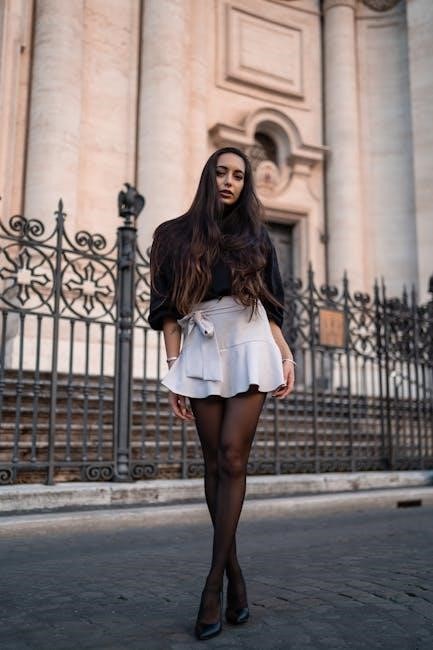
Factors Influencing Skirt Length Choices

Skirt length choices are influenced by body type, personal style, and occasion․ Body proportions play a key role in flattering silhouettes, while seasonal trends and cultural norms also shape decisions․ Understanding these factors helps in selecting the perfect skirt for any setting․
Body Type Considerations
Choosing the right skirt length depends largely on your body type․ Petite women benefit from skirts that create balance, such as knee-length or midi skirts, which avoid overwhelming their frame․ Tall individuals can effortlessly pull off maxi skirts, as they elongate the silhouette without overwhelming it․ For hourglass figures, high-waisted midi skirts highlight the waist, emphasizing curves․ Pear-shaped women find A-line skirts flattering, as they skim over the hips and thighs, creating a balanced look․ Rectangular body types can add curves with flared or tiered skirts, while apple-shaped individuals should opt for skirts that draw attention away from the midsection, such as asymmetrical or high-low hemlines․ Generally, skirts that hit just above the knee tend to elongate the legs and create a proportional balance for most body types․ Understanding how skirt lengths interact with your body shape ensures a confident and stylish choice․
Occasion and Formality
The choice of skirt length is heavily influenced by the occasion and desired level of formality․ For formal events, such as weddings or upscale gatherings, floor-sweeping maxi skirts or elegant midi skirts are often preferred, as they exude sophistication and poise․ In contrast, mini skirts are ideal for casual outings or trendy social settings, offering a playful and modern vibe․ Semi-formal occasions, like office parties or daytime events, call for knee-length or midi skirts, which strike a balance between professionalism and style․ Asymmetrical or high-low skirts can add a touch of uniqueness to a look while still maintaining appropriateness for moderately formal settings․ Seasonal considerations also play a role, with lighter fabrics and brighter colors suited for summer gatherings and heavier textures reserved for autumn or winter events․ Ultimately, pairing the right skirt length with the occasion ensures a polished and appropriate appearance, whether the setting is relaxed or refined․
Seasonal Trends and Fashion
Seasonal trends significantly influence skirt length preferences, with designers and fashion enthusiasts adapting styles to align with the time of year․ During summer, shorter hemlines like mini and micro skirts dominate, often paired with lightweight fabrics and vibrant colors to reflect the season’s carefree spirit․ In contrast, winter fashion favors longer skirts, such as maxi and midi styles, made from thicker, warmer materials like wool and velvet, which provide comfort and elegance․ Spring brings a mix of midi and tea-length skirts, frequently adorned with floral patterns, symbolizing renewal and freshness․ Autumn sees a rise in midi and asymmetrical skirts, often in earthy tones, blending practicality with seasonal aesthetics․ Additionally, current fashion trends dictate which skirt lengths gain popularity․ For instance, high-low skirts may surge in spring for their dynamic appeal, while maxi skirts remain timeless for summer evenings․ Staying attuned to these seasonal shifts allows individuals to embrace styles that resonate with the mood and practicality of each time of year, ensuring their wardrobe remains fashionable and relevant․
